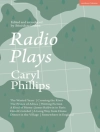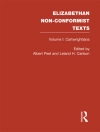In ‘The Most Influential Works by Sir Thomas Browne, ‘ readers are invited into the intricate realm of one of the 17th century’s most profound thinkers. Browne’s writings encapsulate a unique blend of philosophy, science, and poetry, traversing themes of religion, humanity, and nature. His literary style, characterized by a rich tapestry of metaphor and allegory, reflects the intellectual currents of the Enlightenment while maintaining an introspective and contemplative tone. This collection features seminal texts such as ‘Religio Medici’ and ‘Hydriotaphia, ‘ showcasing Browne’s deep engagement with the mysteries of existence, death, and the human condition, all underpinned by a fervent curiosity about the natural world. Sir Thomas Browne (1605-1682) was a physician and writer whose pursuits in both health and literature melded in extraordinary ways. His academic background, rooted in the study of medicine and philosophy, likely served as a catalyst for his exploration of existential themes within his works. Living during a transformative period in England, Browne’s writing not only reflects the advancements in science but also grapples with the tensions between faith and reason, encapsulating the spirit of Renaissance humanism. ‘The Most Influential Works by Sir Thomas Browne’ is an essential read for anyone interested in the development of literary and philosophical thought. It offers readers a chance to engage with profound ideas that continue to resonate today. Browne’s eloquence and depth provide an enriching experience, making it a timeless addition to the library of anyone keen on understanding the complexities of the human experience.
Despre autor
Sir Thomas Browne (1605–1682) was an English polymath and author of varied writings that reveal his wide learning in diverse fields including science and medicine, religion and the esoteric. Browne’s literary style is characterized by a rich, baroque eloquence and a deliberately arcane vocabulary, reflecting his fascination with the unusual and the obscure. His works display a deep curiosity about the natural world and the philosophical speculation about the divine, resulting in a unique blend of scientific inquiry and religious meditation.
Browne’s most noteworthy work includes ‘Religio Medici’ (1643), a personal spiritual testament and an exploration of the harmony between faith and reason. In ‘Hydriotaphia, Urn Burial’ (1658), he conducts a profound meditation on death, the vanity of human desires, and the immortality of the soul. Also of significance is ‘The Garden of Cyrus’ (1658), which explores the symbolism of the quincunx pattern and offers a historic and mystical view of horticulture. ‘Pseudodoxia Epidemica’ (1646), Browne’s voluminous encyclopedic work, tackles common myths and errors of his time, demonstrating his encyclopedic knowledge and scientific skepticism. Through these influential works, Sir Thomas Browne has left an indelible mark on the annals of English literature, influencing subsequent generations of writers and thinkers with his contemplative literary style and his broad intellectual appetite.












